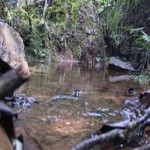- Latest Archaeology Updates
- Importance and applicability
- Famous Archaeologists
- Museums Collections
- Site Map
- World Heritage Sites
- World History Monuments
- Archaeological Organizations
- World Atlas of Archaeology
- Forensic Investigation and Geophysics
- Contact Us
- Movies based on Archaeology
- Frequently Asked Questions
- Archaeological discoveries
- Tell a Friend
- Archaeological Abbreviations
- Gallery Collections
- Famous-Museums site map
- Famous-archaeologists site map
- Archaeological Monuments site map
Parque Nacional Alejandro de Humboldt is a national park in the Cuban provinces of Holguín and Guantánamo.
It is named after the German scientist Alexander von Humboldt who visited the island in 1800 and 1801.
The park was inscribed as a UNESCO World Heritage Site in 2001 for of its size, altitude range, complex lithology, landform diversity, and wealth of endemic flora and fauna.
The rivers that flow off the peaks of the park are some of the largest in the insular Caribbean.
The park is said to be the most humid place in Cuba and this causes a high biological diversity.
The park has an area of 711.4 km² (274.7 sq mi), of which 68.89 km² (26.6 sq mi) land area and 2.25 km² (0.9 sq mi) marine area. Elevation ranges from sea level to 1,168 m (3,832 ft) on El Toldo Peak.
16 of Cuba\'s 28 endemic plant species are protected in the park including such fauna as Dracaena cubensis and Podocarpus ekman.
Fauna present in the park includes various species of parrots, lizards, hummingbirds, the endangered Cuban Solenodon (endemic), Hutia and snails.

